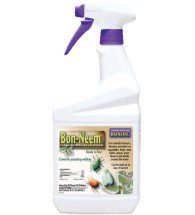The Plumeria Troubleshooting Guide helps you quickly identify and resolve common issues such as yellowing leaves, poor blooming, pests, and root problems—ensuring your plumeria stays healthy and beautiful year-round.
About The Plumeria | Beginners Guide | History and Culture Guide | Articles and Inspiration
Leafhopper on Plumeria
Leafhopper – Pest
Leafhoppers are insects that typically feed on various fruits, vegetables, flowers, and woody ornamental hosts. Most species of leafhoppers have a selective diet, feeding on one or a few closely related plant species. Adults are usually slender, wedge-shaped, and less than or about equal to 1/4-inch long. They can be shades of green, yellow, or brown, and are often mottled. While some leafhopper species are brightly colored, others blend in with their host plant. Leafhoppers are active insects that move sideways quickly or jump when disturbed. You can usually find adults, nymphs, and their pale cast skins on the underside of leaves.

Identification
Leafhoppers can sometimes be mistaken for aphids or Lygus bugs. To identify leafhoppers, check the undersides of the affected leaves for leafhoppers or their cast skins. Observe their movements; they are faster than aphids, run sideways and jump. Lygus bug nymphs are light green and also move much faster than aphids. You can identify them by their red-tipped antennae. Aphids, on the other hand, have two tubelike structures called cornicles protruding from their hind end. Leafhoppers can be distinguished from most other insects they resemble by one or more long rows of spines on their hind legs and unique characteristics on their head.
Some common leafhopper species in gardens and landscapes. The common leafhopper found on plumeria is the potato leafhopper.
Life cycle

Leafhoppers go through incomplete metamorphosis in their development. Female leafhoppers insert tiny eggs in tender plant tissue, causing pimple-like injuries. Overwintered eggs begin to hatch in mid-April. Wingless nymphs emerge and molt four or five times before maturing in about 2 to 7 weeks. Nymphs resemble adults except for lacking wings; later-stage nymphs have small wing pads. There is no pupal stage. Leafhoppers overwinter as eggs on twigs or as adults in protected places like bark crevices. In cold-winter climates, leafhoppers may die during winter and in spring, migrate back in from warmer regions. Most species have two or more generations each year.
Damage
The potato leafhopper has a sucking mouthpart that it uses to pierce into the vascular tissue of the plant and feed on the plant juice, sapping it of nutrients.
However, according to Groves, the damage is most commonly seen on the plumeria as a result of a condition called hopper-burn, which is the plant’s physiological response to the leafhopper’s saliva. The saliva causes the vascular system to be disrupted, and the leaves that have been fed on curl up and can become necrotic.
Leafhopper feeding causes leaves to appear stippled, pale, or brown, and shoots may curl and die. Black spots of excrement and cast skins may be present on leaves. Some leafhopper species transmit plant diseases, but this is troublesome mostly among herbaceous crop plants.
This is a must read article written by plumeira experts from Southern California. Link to pdf file leaf-hopper

Control for Leafhoppers
for Leafhoppers
Bon-Neem
Specially formulated to kill mites, aphids, whitefly and more on contact.
Tip: To improve the effectiveness of insecticidal soap, mix 1 tablespoon of isopropyl alcohol with 1 quart of the spray. It helps the soap penetrate the insects’ outer shells.